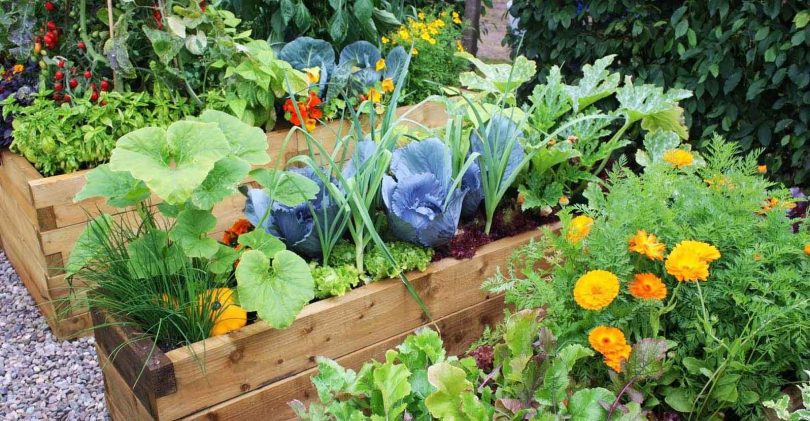N.C. State Extension
Central North Carolina is a wonderful place to garden. Almost any type of vegetable or fruit can be grown successfully provided you choose appropriate varieties and plant at the right time. The climate, the season, and potential pests all affect the selection of what and when to plant.
Adapted to Climate
Freezing temperatures, high temperatures, humidity, and solar intensity, all common in central North Carolina, can stress plants. To successfully grow plants in this environment, select varieties that are tolerant of temperature extremes, plant at the appropriate times to avoid temperature extremes, or plan to protect the plants. It is possible to grow plants out of season by creating microclimates that differ from the overall climate by providing shade, humidity, or artificial heat.
Seasons
We have three optimal growing seasons–spring, summer, and fall. Both day length and temperature vary dramatically between seasons (short days and cool temperatures in spring and fall; long days and high temperatures in summer). Some plants are adapted to growing in the cool months of the year and will tolerate some frost (cool-season vegetables), while others do not tolerate frost and should be planted to grow outside only in frost-free months (warm-season plants). Even warm season plants have their limits and will temporarily stop bearing during heat waves (temperatures in mid 90s).
Disease and Pest Resistance
Choose varieties that have been bred to resist diseases and pests. Some companies list resistance on the plant tag, the seed package, or in a seed catalog. Many companies use initials following the plant variety name. For example, “V” may mean resistant to Verticillium wilt disease, “N” may indicate resistance to nematodes, “F” may indicate resistance to Fusarium wilt disease, and “T” may indicate resistance to Tobacco Mosaic virus. Different companies use different symbols, so be sure to check their respective keys to understand the labeling. Choose a planting date to avoid known pest seasons. Delay fall planting until whitefly populations decline with cooler temperatures, for example, or delay spring planting until soils become warm to reduce fungal and bacterial disease problems.
Cultivars
Select varieties that provide desirable yield, taste, texture, and color. Using varieties that mature quickly may help avoid insect and disease problems. New varieties are released each year, and other varieties may become unavailable. Check with your local Extension website, Extension Master Gardener volunteers, or Extension agents for the varieties best adapted to your area. You can also read vegetable variety reviews from gardeners across the country online at Vegetable Varieties for Gardeners.
Planting Dates
The dates in Table 1 are suggested guidelines and should provide the highest probability of success, but weather conditions vary from year to year and planting dates should be adjusted accordingly. Plants established in the middle of the recommended planting dates will do best with lower success rates at both the earlier and later recommended planting dates. The dates on the chart are for planting out in the garden (Figure 3). If you provide shade in the summer and frost protection in the winter, you may be able to extend the season both before and after these recommended dates. Spun-woven covers can allow you to begin your garden earlier in the spring and extend it longer into the fall. In addition, plastic mulches can be used to produce vegetables earlier in the season. Planting additional plants every few weeks within the planting window will extend your harvest over a greater period.
When to Harvest
Plants produce fruits and seeds to reproduce. Once a plant produces mature fruit, it quits putting energy into reproduction. (The plant quits making flowers and fruit.) If fruit is removed before it fully matures, however, the plant will try again, producing more fruit. Many plants produce so quickly that they need to be harvested every couple of days. These include okra, string beans, garden peas, cucumbers, summer squash, and tomatoes. Daily garden visits ensure vegetables will be picked at the peak of perfection and not allowed to become overripe or spoil on the plant, attracting insects or animal scavengers.
Look for signs that animals have been in the garden (such as footprints and droppings, which can pose a health risk by harboring parasites and disease organisms). Dispose of fruits and vegetables that may have come in contact with animals and their feces.
The easier the garden is to see and access, the more likely it will be visited on a regular basis.



